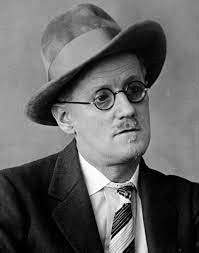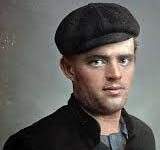A Portrait of the Artist as a Young Man as a Stream of Consciousness Novel
A Portrait of the Artist as a Young Man as a Stream of Consciousness Novel
A Portrait of the Artist as a Young Man as a Stream of Consciousness Novel
The Stream of Consciousness Novel is an improved and delicate form of the psychological novel. It depicts the flux of inner feelings and thoughts of the human psyche in a more sophisticated way. ‘The stream-of-consciousness novel’ may be defined as a genre of novel that portrays the incessant and often incoherent set of feelings, thoughts, impressions, emotions, memories, mental images, speculations, meditations, and reveries of the human mind that keep changing but flowing from moment to moment and which are generally kept untold in day to day practical life. The stream-of-consciousness novel is based on the Freudian psychological theory of the complexities of the workings of the human psyche. This genre of the novel comes into being as a special form of the novel during the first half of the twentieth century. Dorothy Richardson, Virginia Wolf, James Joyce, and others contributed to this genre of novel. Though their novels vary with each other in degrees and standards, yet there are some common features (characteristics) that may be the criteria for judging a novel as a stream-of-consciousness novel. The main characteristics of this genre of novels are- (i) it deals with the inner workings of the human mind, (ii) there is no specific plot but fragments of detached episodes, events, and thoughts combined together incoherently; (iii) there are characters but no characterization; it reveals only the inner workings of a character who sees and observes things of the past, future and present subjectively; (iv) there is no structure- neither specific beginning nor logical ending. (v) there is some use of symbols that symbolize the character’s inner state of mind; (vi) by investigating, analyzing, or reflecting the concerned episodes or events, the hero develops self-education or mental calibre and (vii) the language is often prosaic, sometimes emotional or poetic, hasty and sometimes chaotic. The thoughts and feelings are presented in language as they flow through the mind without organizing them logically.
James Joyce’s ”A Portrait of the Artist as a Young Man” is a novel of this genre. The novel contains all the common characteristics of a stream-of-consciousness novel. We can illustrate the novel as a novel of this genre below:
First, the novel deals with the incoherent sets of mental thoughts and reveries of a character named Stephen, a young university student. He thinks and re-evaluates the happenings of his past years. He recollects incoherent episodes that his father told him about the moocow and the song that he used to sing during his childhood. He recollects his bed that he felt warm and then cold, then he talks about his uncle Charles, Dante, Eileen Vance and others. Thus the novel is replete with the complex reminiscence of his past events. To say in brief, the novel bears no specific theme but the thoughts and re-evaluation of his by-gone days with his family members, classmates and friends and so on.
Secondly, there is no plot, but fragments of detached episodes and events combined together as we huddle rubbish in the dustbin. The only episode that gets some elaboration is his feeling of love for Eileen Vance, but the episodes fail to be the plot as it has neither a specific beginning nor development. Then he gives an account of his confession of guilt which modifies his spiritual character, but his account is also fragmentary.
Thirdly, there are characters but no characterization. No character is perfect. The novelist has portrayed a corner view of people with whom the novelist has gone into contact. The only characterization that the novelist goes to show widely is Stephen but his portrayal is one-sided— only the mental state of Stephen. Studying him, we see that Stephen is repulsive to his surroundings and to the treatment of people meted out to him.
Fourthly, there is no structure in the novel. It has neither a specific beginning nor a logical ending. The novelist begins his novel in one thing and ends in another thing. It begins with Stephen’s recollections of the dealings with his family members and he ends the novel with Stephen’s decision to leave his motherland in search of a lonely environment of becoming an artist.
Fifthly, the novelist has used some symbols to show the impression of Stephen’s mental feelings. Birds, water, and clouds are the chief symbols that Joyce has woven into the texture of the novel. The ‘bog-water’ into which Wells pushes Stephen symbolizes Stephen’s return to consciousness. The symbol of ‘eagle’ that was thought to pull out the eyes of Stephen symbolizes ‘flight and liberation’. The ‘red rose’ and ‘white rose’ symbolize two dissent groups of politicians. In addition to these, there is a symbol of ‘roads’ which indicates the wandering nature, both mental and physical, of a human being. Thus Stephen’s surname ‘Daedalus’ signifies his aspiration.
Sixthly, by investigating, analyzing and reflecting on Stephen’s past events and episodes, he develops his moral and spiritual state of mind. We see that Stephen was addicted to carnal sin, committed by going to a brothel; but later on, he confesses his sin to the priest and thus corrects himself.
Seventhly, the language of the novel is often prosaic, sometimes emotional, poetic, hasty and sometimes chaotic which corresponds to the mental state of Stephen. For example- the following lines may roughly be quoted:
(I) His sin trickled from his lips, one by one, trickled in shameful drops from his soul, festering and oozing like a sore…
(ii) A day of dappled sea-borne clouds.
From the above illustration, we see that James Joyce’s novel entitled ‘A Portrait of the Artist as a Young Man’ bears almost all the common characteristics of a stream-of-consciousness novel and it may rightly be said that it is an exemplary novel of this genre. 0 0 0
A Portrait of the Artist as a Young Man as a Stream of Consciousness Novel
Read More: Use of Wit and Irony in Pride and Prejudice
A Portrait of the Artist as a Young Man as a Stream of Consciousness Novel
N. B. This article entitled ‘A Portrait of the Artist as a Young Man as a Stream of Consciousness Novel’ originally belongs to the book ‘World Novel Criticism‘ by Menonim Menonimus. A Portrait of the Artist as a Young Man as a Stream of Consciousness Novel,
A Portrait of the Artist as a Young Man as a Stream of Consciousness Novel
Related Searches:
- Stream of Consciousness in A Portrait of the Artist as a Young Man
- Evaluate A Portrait of the Artist as a Young Man as a Stream of Consciousness Novel
- Use of Stream of Consciousness in Joyce’s A Portrait of the Artist as a Young Man
- Use of Stream of Consciousness Technique in Joyce’s A Portrait of the Artist as a Young Man
Books of Literary Criticism by M. Menonimus:
- World Short Story Criticism
- World Poetry Criticism
- World Drama Criticism
- World Novel Criticism
- World Essay Criticism
- Indian English Poetry Criticism
- Indian English Poets and Poetry Chief Features
- Emily Dickinson’s Poetry-A Thematic Study
- Walt Whitman’s Poetry-A Thematic Study
- Critical Essays on English Poetry
- Tawfiq al-Hakim’s Novel: Return of the Spirit-An Analytical Study
- Tawfiq al-Hakim’s Novel: ‘Yawmiyyat Naib Fil Arayaf’-An Analytical Study
- Analytical Studies of Some Arabic Short Stories
- A Brief History of Arabic Literature: Pre-Islamic Period …











